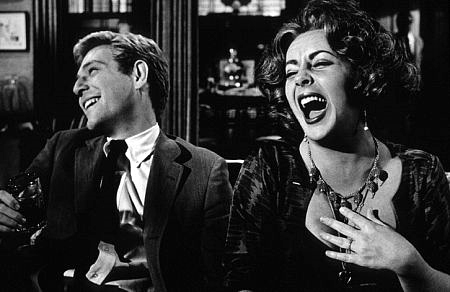By providing your information, you agree to our Terms of Use and our Privacy Policy. We use vendors that may also process your information to help provide our services. This site is protected by reCAPTCHA Enterprise and the Google Privacy Policy and Terms of Service apply.
Broadway Playwright Explains Mike Nichols’ Talent For Turning Theater Into Film

I am not a student of film. I come from the theater, though I don’t really consider myself a student of that either. I have very little training in both. What I do know is that as I prepared to direct a film adaptation of my Broadway play, “Match,” I began to freak out. How, I asked myself, do I not fall into the trap of making a really crappy film from a play? How do I keep from making what I know is a good story into a forced and contrived visual failure? There was really only one place to turn: Mike Nichols’ adaptation of Edward Albee’s “Who’s Afraid Of Virginia Woolf.”
“Woolf” was Nichols’ first movie, and it stands today as a resounding reminder of the importance of a dose of audacity. I don’t know what kind of pressure Nichols was under from Warner Brothers to “blow out the locations” and give the film more “visual splendor,” but it’s quite clear that he went the opposite way. Other than the opening credits sequence, the roadhouse scene, a scene in the yard and a scene in the car, the play sticks to George and Martha’s house. The film is black and white and there is only one camera used throughout. There aren’t quick cuts, there isn’t hand-held.
READ MORE: Here Are Mike Nichols’ Best Films, From ‘The Graduate’ to ‘The Birdcage’
Instead, Nichols and cinematographer Haskell Wexler seem to have choreographed the hell out every single scene in the house. The camera is the story’s bloodline, pumping narrative as it hands shots off from actor to actor. Rather than deliver 30 different locations that aim to tell the story through their vastness and variety, Nichols allows the actors’ electric presence and investment to dictate where the shot is placed, where it lands, and when it’s off to next. The thrill of the ride is in the words, as it certainly should be, but cinematically it’s in the reactions.
 Which is to say, Nichols doubles down on the acting. It’s what he would develop his career around. He doesn’t try to show his actors up, or buffer them with stylistic frills, or surround them with dazzling color palettes. Instead, he keeps it simple by understanding who he has and their ability to convey a million different landscapes of emotion–and he films that as beautifully, vividly and excitingly as he can.
Which is to say, Nichols doubles down on the acting. It’s what he would develop his career around. He doesn’t try to show his actors up, or buffer them with stylistic frills, or surround them with dazzling color palettes. Instead, he keeps it simple by understanding who he has and their ability to convey a million different landscapes of emotion–and he films that as beautifully, vividly and excitingly as he can.
And it’s a riveting movie, because he so deeply trusts his material, his actors, and the intimacy of his camera to carry us through the night. The actors tell us almost as much between the words as they do on them, and the camera is always right there, caressing them, slapping them, almost inside their thoughts.
All of which — and this is pure speculation — but all of which allows Nichols to actually direct his actors. The most exquisite aspect of his work on this film may well be in how he extracts the performances. He was a relatively young guy working with two of the biggest stars in the industry, but he understood how to apply his extensive theater chops to this medium that was new to him.
The piece is one that is easily overacted, and yet to under-act it is to fail miserably. Nichols somehow got it just right. Elizabeth Taylor, far too young for the part, delivers a jaw-dropping performance. That’s not easy to do, and she did it brilliantly, but it’s impossible to do without a director guiding her every step of the way. A performance like that is the result of diligent directorial preparation, of creating an environment where risks are what the actor wants and needs to take, and where the camera is always ready to capture those moments where the actor has ventured into new terrain. The actor must trust enough to go there, and the director must be there, ready to capture it with immediacy when she does.
Nichols achieves this and more in this film. It’s an audacious reminder to always stick with truth and honesty, even if it’s in black and white, and on virtually a single set.
By providing your information, you agree to our Terms of Use and our Privacy Policy. We use vendors that may also process your information to help provide our services. This site is protected by reCAPTCHA Enterprise and the Google Privacy Policy and Terms of Service apply.

















